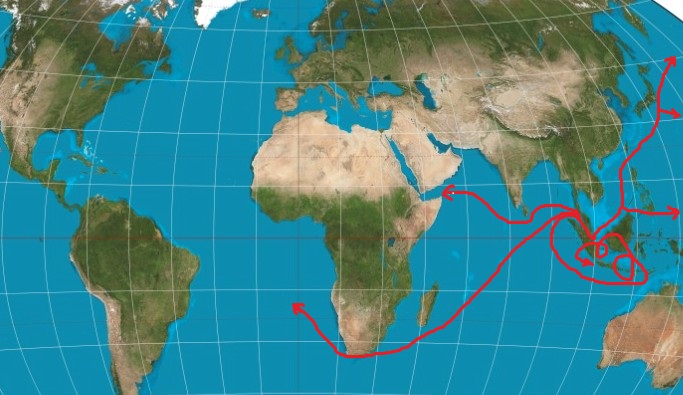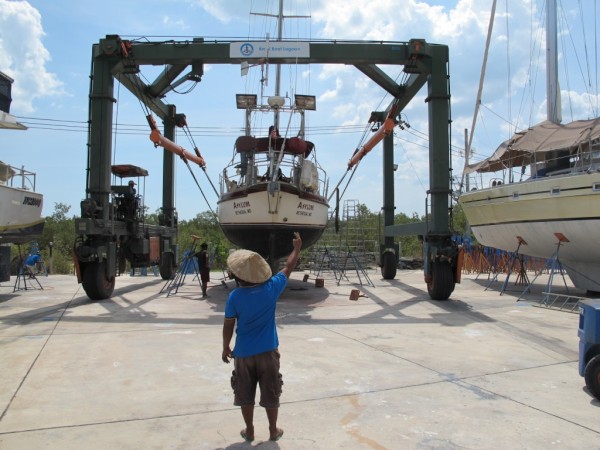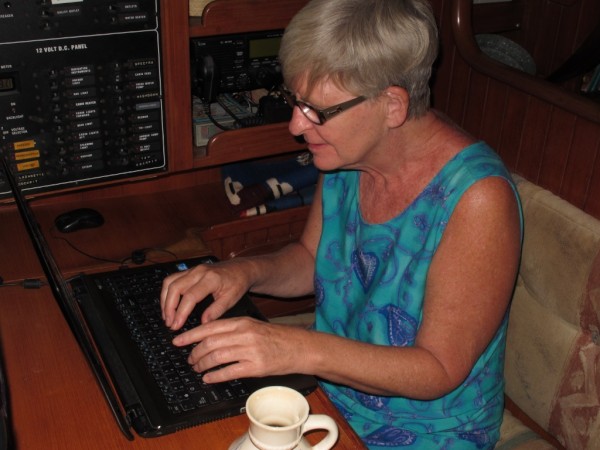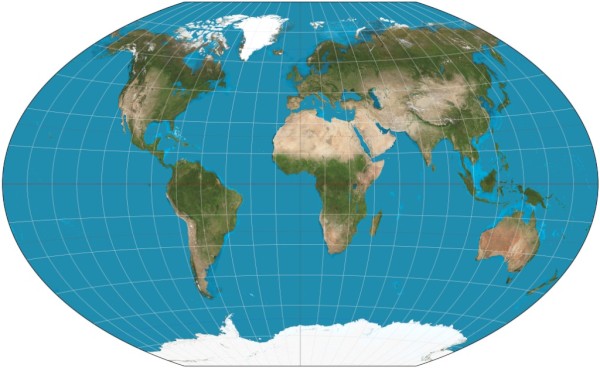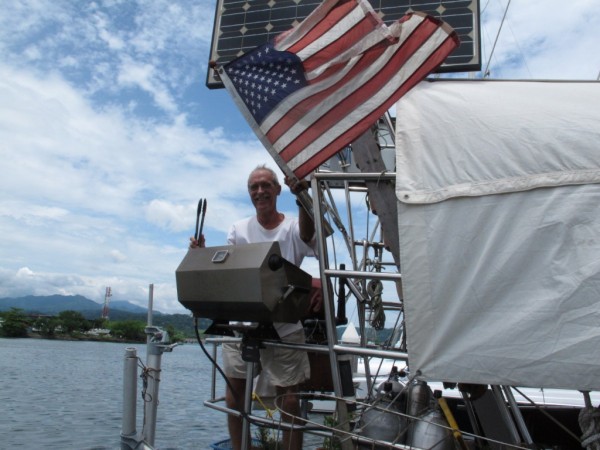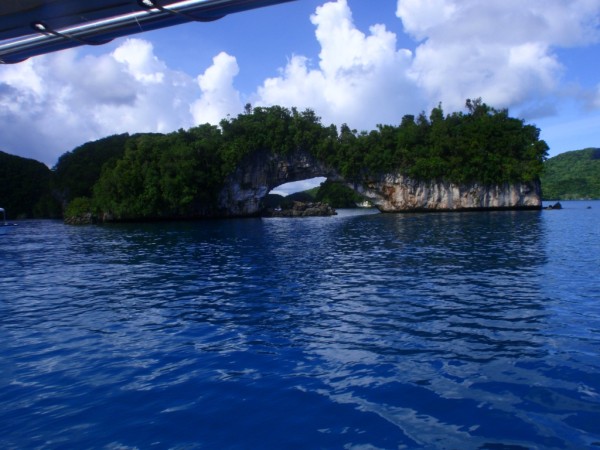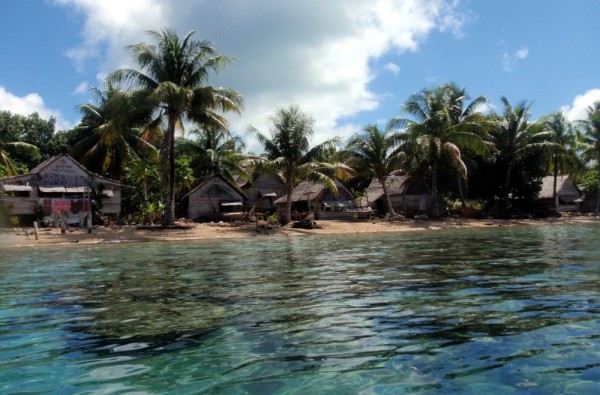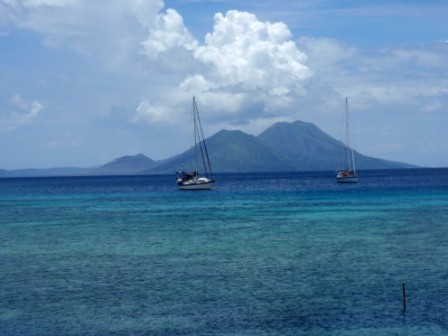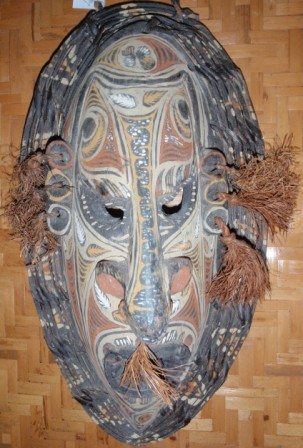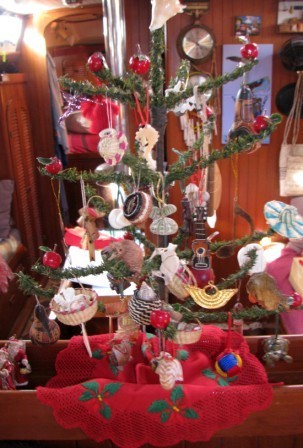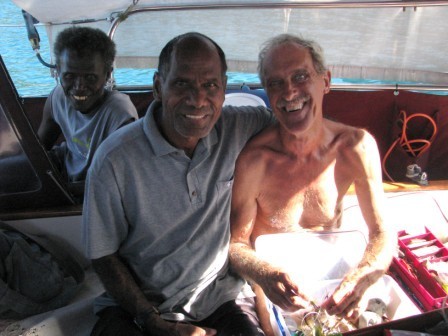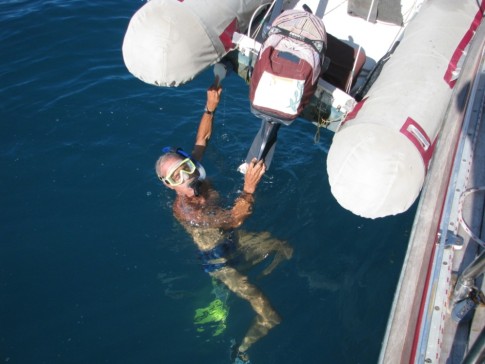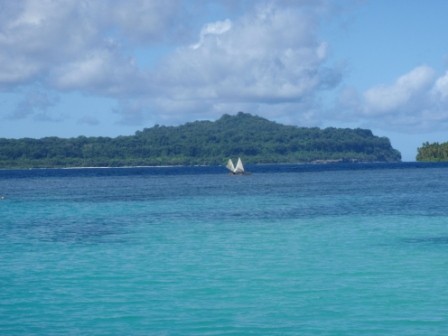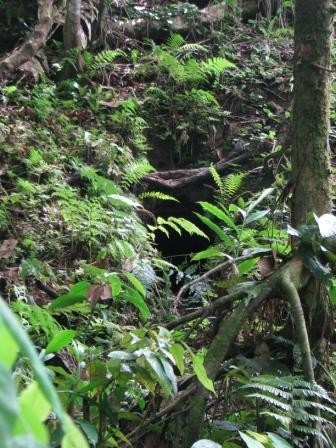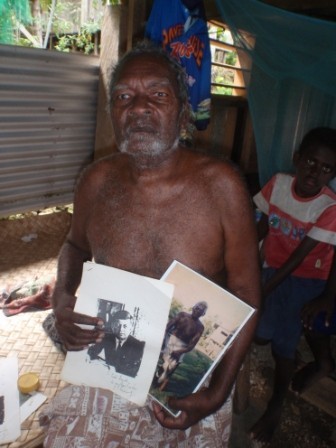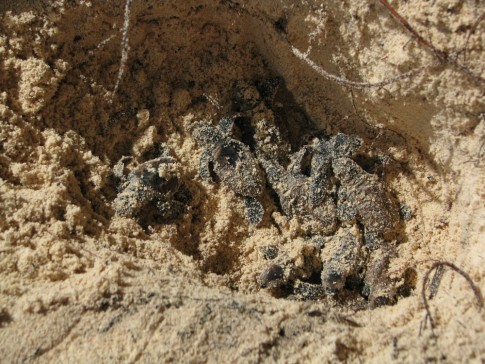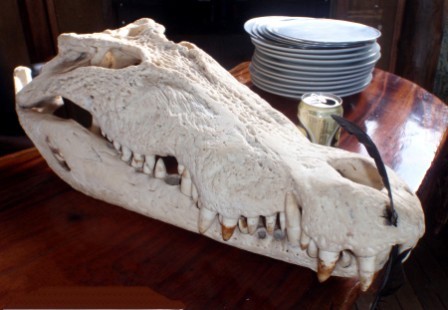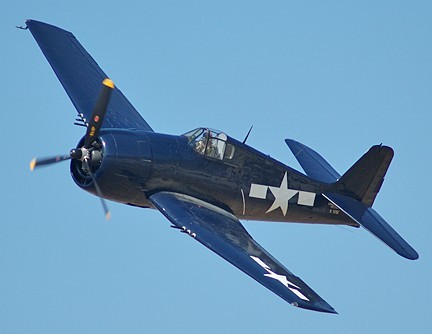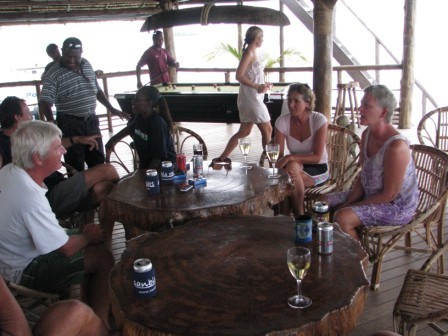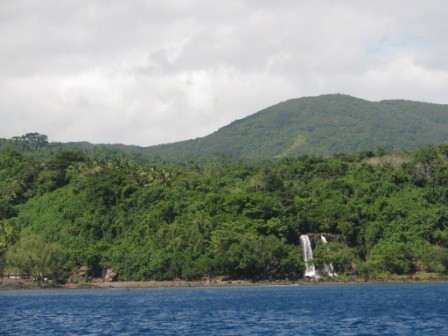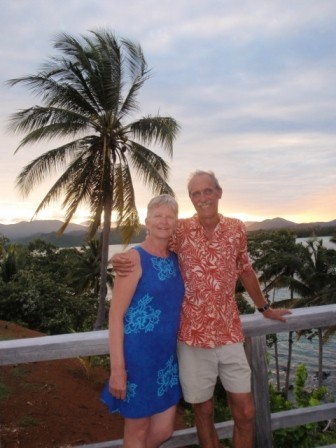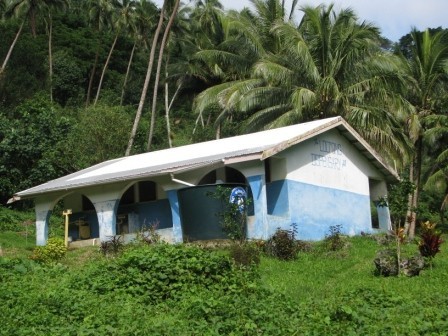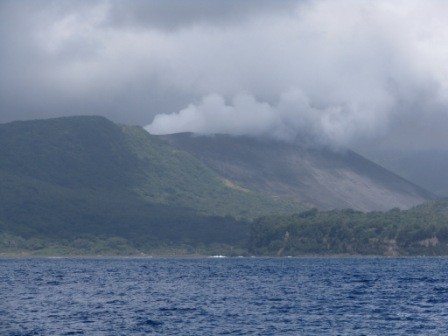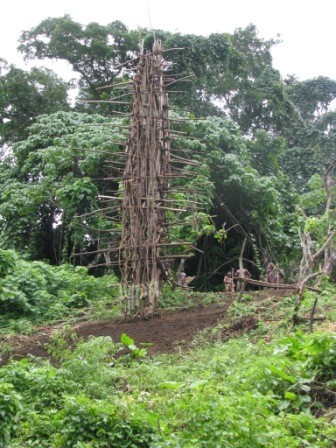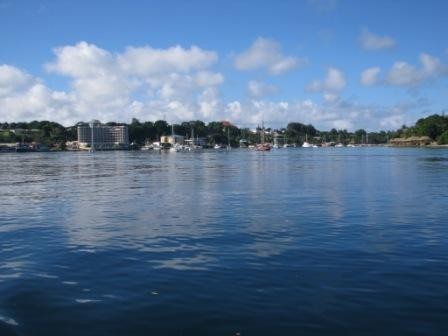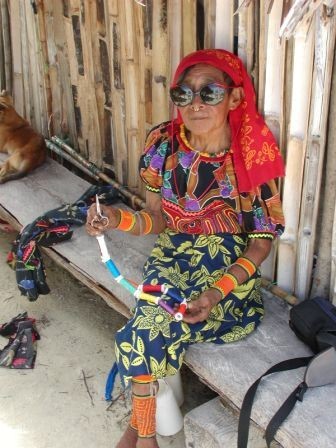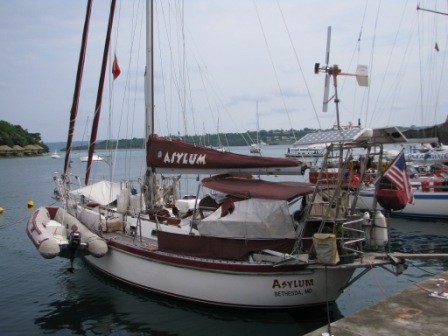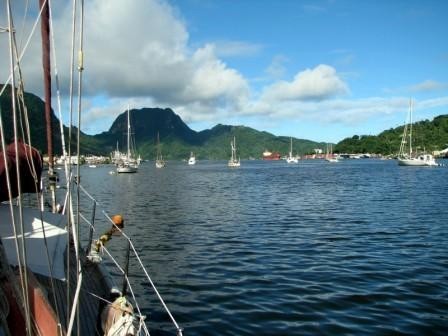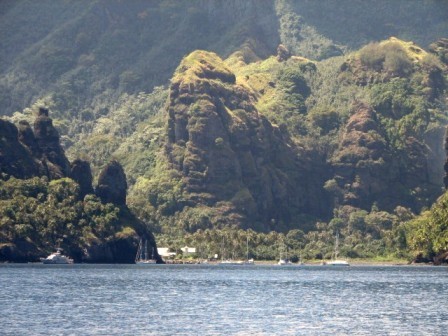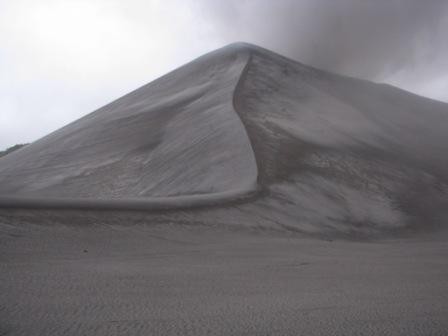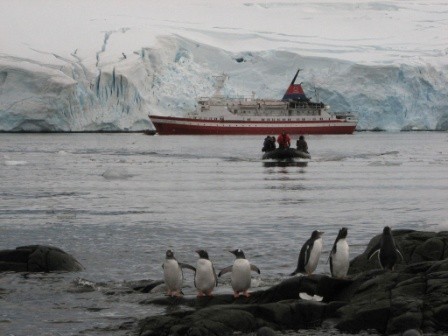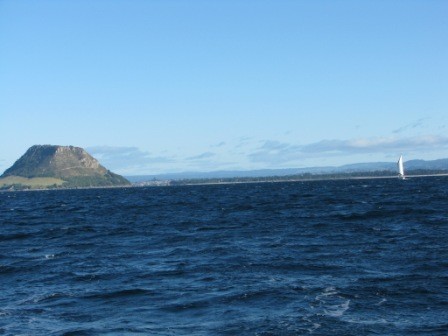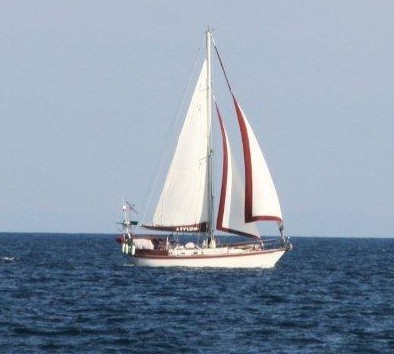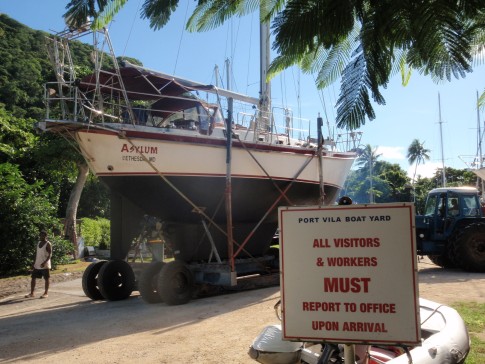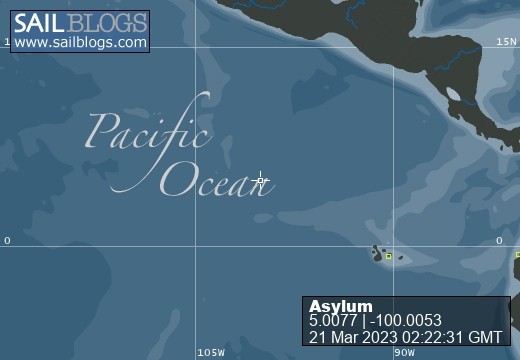
Asylum
22 June 2019 | Straits Quay Marina, Penang, Malaysia
17 July 2016 | Penang, Malaysia
20 February 2016 | Penang, Malaysia
02 October 2015 | Thailand
11 April 2015 | Krabi Boat Lagoon Marina, Thailand
25 December 2014 | Langkawi, Malaysia
04 June 2014 | Philippines
07 January 2014 | Brookeville, MD
04 July 2013 | Subic Bay Yacht Club, Philippines
31 October 2012 | Palau
02 December 2011 | Hermit Islands, Papua New Guinea
08 November 2011 | Maryland, USA
15 May 2011 | Kavieng, New Ireland, PNG
26 April 2011 | Kavieng, New Ireland
26 March 2011 | Kokopo, New Britain, Papua New Guinea
16 March 2011 | Kokopo, New Britain, Papua New Guinea
12 February 2011 | From Peava again
05 February 2011 | Solomon Islands
01 December 2010 | From Lola Island, VonaVona Lagoon, Solomon Islands
30 November 2010 | Peava, Nggatoke, Solomon Islands
Inmate Update #11: So what is the definition of a “pirate” anyway?
15 October 2002 | Culb de Pesca, Cartagena, Colombia
So what is the definition of a "pirate" anyway?
As we sit here in lovely old Cartagena, jewel of the Spanish Main, it's hard to believe the events of the last couple of weeks. We've been clamoring to get here for some time--and are very happy to be here--but the trip down from Aruba offered up much more adventure than we ever bargained for!
We returned to Asylum, who was patiently waiting for us in Aruba, on September 12 after our 2-month visit in the States. The old girl was fine but filthy. It seems that while we were gone, the new marina where we left her decided to pave its large dirt parking lot. To do that, they needed to grade the area, and to do that, they apparently dumped many truckloads of additional dirt on the lot, most of which blew onto and into Asylum! Everything on the boat was brown. So in addition to reassembling various pieces of disassembled equipment, re-provisioning the empty fridge, reinstalling the repaired sail, (re)stowing all the junk we brought back with us, and rejuvenating the sleeping engine, complete with new water pump, we also had to give the boat a major reverse mud bath. You should have seen the rivers of brown flowing down the mast, out of all of the rigging, from every halyard and every line. Every time it rains we're still seeing little rivulets of mud trickling down the deck.
Our goal was to get things shipshape so we could head out of Aruba as soon as possible for Cartagena, there being nothing to keep us in Aruba. While we were doing all this, we learned that two of our old cruising buddies were on their way from Bonaire to Aruba, enroute to Cartagena. Although we were prepared to make the 400 mile trip alone, with their arrival we had the possibility of a convoy.
The route between the ABCs (Aruba, Bonaire, Curacao) and Cartagena is notoriously difficult and has a reputation as one of the most challenging sailing areas in the world--"not just the Caribbean. There are basically only two good times a year to make that crossing: Oct/Nov or April/May. In December/January, the NE trade winds that pick up in mid-December (and hence are known as the "Christmas winds" down here) tend to pile up big seas in the SW corner of the Caribbean, down around Colombia and Panama, so trying to get to Panama at that time of year can be especially difficult. In fact, in January a boat we know (with 2 kids on board) on its way to Panama was hit by a rogue wave and rolled, losing both masts and everything on deck (everyone was fine). Another boat hit something and sank (this is a MAJOR shipping route and apparently stuff is falling off those big container ships all the time). Add to that some nasty adverse currents and it can be a very slow trip on top of everything else. We were originally going to wait till sometime in Oct to make the run, but our friends on The W.C. Fields had made it quite painlessly in early September, and we were having pretty much the same weather patterns they had, so we all decided to go for it. In fact, the weather window was just about perfect, including a full moon on September 21, Jim's rather, um, large birthday.
Just as it's not a route to be messed with in terms of weather and seas, there's also the issue of Colombia's rather shady reputation, and whether to sail straight from the ABCs, non-stop to Cartagena, or coast-hop along the way. There are no standard cruising guides to this area, like there are for just about everywhere else in the Caribbean, but about a year ago, another boat published an article in one of the cruising rags about how to coast-hop from the ABCs to Cartagena, noting anchorages along the way, strategies for crossing the mouth of the Rio Magdalena, etc. We were leaning toward the coastal route, which allows you to stop and rest along the way, but hadn't rejected the possibility of going straight thru. We have friends who had done both, and if you time the weather right, both are quite do-able. It's recommended that the coastal route be done in company, but The W.C. had just done it alone without incident. We had many options. But as I said above, the arrival of our friends on Morning Dew and Eclipse sort of sealed the deal: we'd coast-hop to Cartagena with them in a nearly perfect weather window.
Before we get underway, a brief introduction to Morning Dew (MD) and Eclipse. MD is a Tayana like we are (she's a 37; we're a 42). Its owners are a retired infectious disease physician/researcher/professor from Harvard, Willy, and his nurse/public health professor wife, Pat. We met them 2 years ago and have run into them here and there ever since. In the small world department, they spent 15 summers in Indonesia working for the NAMRU-2 detachment, including the three summers Jim was the CO of NAMRU-2 in Manila. Altho we never met them there, when we finally did meet them in Trinidad Jim remembered their names from paperwork that had come across his desk all those years ago. They're a very worldly and colorful couple, who, by their own admission, are not very good sailors. They'd already decided to pack in cruising, take the boat to Panama to sell it, and then settle in Costa Rica. Eclipse is a Mason 44, sailed by single-hander Tom (i.e., he sails the boat alone). Tom and MD have traveled together much of the time since they left Massachusetts about the same time we left Maryland in Oct. '99. Tom is a very good sailor and MD credits him with getting them where they've wanted to be and out of various jams along the way. One of the things you learn out here if you didn't already know it is that size matters. Boat size, that is. Longer boats, in general, go faster than shorter boats. And lighter boats go faster than heavier boats. Eclipse is long and sleek, and quite fast. We're a very heavy cruiser, and not very fast. MD, being the smallest, and also a heavy boat, was the slowest. These become real factors when boats are traveling together, timing arrivals, trying to beat weather, etc.
So now back to the trip. MD and Eclipse wanted to leave around midnight on 9/21, taking advantage of the full moon, to make the first hop to an anchorage on the Venezuelan coast. We weren't quite ready to go so told them we'd meet them at the next stop, Cabo de la Vela (Cape of the Sail), on the Colombian coast. We left at noon on the 21st for an overnighter to Cabo de la Vela. The wind, as usual, was stronger than we expected when we left but "No sweat!" says we. We're finally going to be sailing downwind (rather than our more traditional course dead into it) and it takes a goodly amount of wind to push Asylum downwind. The swells were pretty big, but McMurphy (the autopilot) was handling them just fine. The fact of the matter is, we've never much liked sailing downwind or thought ourselves very good at it. When we sailed the Chesapeake, we actively avoided destinations that required downwind sailing. But out here, going downwind is considered the sine qua non of comfortable cruising and every sailor's goal. As our circumnavigator friends pointed out to us, if you're gonna do a circumnavigation, you better get used to it and good at it! So we did some attitude adjustment and practice underway, and actually had the old girl flying along quite nicely. The seas were pretty big, rolling up under the stern and sending us surfing down the waves as they passed under us. But they weren't breaking, so the trip was dry (unlike our last lovely passage). The full moon was so bright it almost bleached out the stars. By early morning the wind had died and we had to resort to the engine. Apparently we're not allowed to have a trouble-free passage, as Jim noticed water coming into the bilge after we'd turned it on. We did some experimenting with engine RPMs and he concluded that the shaft seal was loose ... and that he thought he could fix it when we got anchored. If he couldn't, and if we didn't have any wind, the rest of the trip was gonna be a slow slog indeed.
MD and Eclipse left their intermediate anchorage sometime in the middle of the night and we all came together at Cabo de la Vela on Colombia's north coast. We were visited almost immediately by a boat of very friendly fisherman with a hefty catch. We got 4 lovely red snapper ("pargo" in Spanish), for a little bit of cash, 4 snickers bars, 4 packages of cracker-cheese snacks, and a ratty old pair of dive gloves. Everyone was happy. The next morning they came back with 4 lobsters. Jim adjusted the shaft seal, and that evening we watched a mighty show of lightning in the western sky--right where we were heading the next day.
MD left early the next morning, giving themselves a head start on our next leg, another overnighter to the "Five Bays" region on the north coast. We left mid-morning, gingerly goosing the engine to see if the shaft-seal fix had worked. At that time, it looked like we were going to have to motor as there was no wind. What he did seemed to have done the trick so we didn't have to creep along. The wind did pick up tho, and we had another great down-wind practice session, complete with poled-out jib (which we've always avoided doing). We were starting to convince ourselves we could enjoy this. But the wind didn't have the good graces to stop picking up, so as night fell (of course) we had more than enough and were having to reef the sails. The seas were also pretty big, we were rolling like hell, and decided maybe we didn't like this so much after all. And then came the lightning show again, this time right over us, as we were now under last night's western sky. The radar screen was black with bulging squalls and looked ominously like it did that miserable night out of Cienfuegos, Cuba. Fortunately these guys turned out to be pretty benign: they didn't have too much extra wind in them and the rain gave Asylum another good rinse. Eventually they moved on, returning us to the luminous full moon and a lovely clear sky. During all this, getting prepared for what the squalls might have delivered, Jim went to turn the engine on and heard nothing but an empty click. Nada. After some diagnostic furor, he determined that our starter battery had cashed it in. So he flipped the (thankfully installed) switch that connects the starter motor to the house battery bank and the "iron genoa" came to life. No trip would be complete without some form of gear failure...
As the sun came up, we were greeted by the spectacular and fjord-like scenery of Colombia's north coast around the area known as "5 Bays." Steep hills that turn into mountains in the background drop straight into the water, with deep cuts making beautiful bays. Apparently at some times of the year you can actually see snow on the mountaintops, which would have been a truly amazing sight given how hot it was at sea level! We were shooting for the middle bay, where we'd been told was a very friendly guy who paddles out in his ratty little canoe to greet you, tries to get you to buy some stuff, and offers to take you on a hike to some supposedly pre-Colombian burial grounds. He did, indeed, paddle out to say hello, but the timing didn't work to take the hike. Our friends on The W.C. Fields said he showed them some (supposedly) authentic old gold pieces that he kept buried in a plastic margarine tub. (The fifth bay, we'd been told, was quite lovely, but that a crazy guy lives there who's involved in Colombia's, uh, major export business and has been known to come out waving his gun to shoo cruisers away who innocently drop the hook for a good night's sleep... Thus we opted for Bay #3.) We stayed three nights, the last only because we had reports that the seas had kicked back up and we didn't care to be kicked around by them.
On the way to our next stop we passed Santa Marta, the oldest city in Colombia, with its beautiful old cathedral towers rising over the largely ugly tankers in its harbor. We stopped in the resort town of Rodadero, just beyond Santa Marta, for a brief layover before the next longer run. Good thing it was brief. Rodadero is a busy, noisy resort town and the beach was crawling with people. Our three boats were the objects of much curiosity from locals tooling around in little paddle boats, most of them very friendly and just wanting to practice the English they knew ("hello" and "goodbye")--although one group did ask if they could come aboard Tom's boat. The omnipresent salsa band, with the bass turned up as loud as it would go, cha-cha-cha'd well into the wee hours, and we were glad when our 0200 departure hour arrived.
We were leaving in the middle of the night to time our crossing of the mouth of the substantial Rio Magdalena during the morning daylight hours. This river is the main artery of commercial traffic in Colombia, navigable for 800 miles inland. It can have a current of up to 6 knots, which would leave us going nowhere fast if we were to try to ply it. Fortunately we weren't; our only task was to cross its mouth--which was not without its own problems sometimes (one cruising article referred to it as "the dreaded Rio Magdalena") as there can be lots of junk spewing from the river into the sea and/or very short, steep waves near the entrance. As we approached the area, the water color went from Caribbean blue to runoff brown. We saw plenty of floating sticks, a few small logs, and lots of big floating patches of a sea plant called "water hyacinth." Nothing that would hole and sink the boat, tho. And the seas were pretty flat. We were having a pretty easy crossing, except that MD's engine died right in the middle of it all and there was NO wind for sailing. We were bringing up the rear of the caravan at that point, with Eclipse in the lead. He turned around and came back and we came up on MD and waited while they tried to get the engine started again. Just in case, tho, we were making plans for towing them the last 20 miles to our next anchorage. A sloooow trip that would have been, between the weight of the boat and the adverse current, but they were able to get the thing sputtering again, and we all took it slow the rest of the way toward our next stop, Punta Hermosa.
As we approached it in the early afternoon, the point of land we had to round to get into the anchorage was enveloped in a monster squall. The swirling clouds were every shade of gray, ominous looking, and spewing well-defined rainstorms at regular intervals along the line of the squall. We'd wait, thank you, for it to pass. That very point of land already had ensnared and destroyed one cruising boat earlier this year and we sure as hell didn't want to try it in a no-visibility squall. So we came to a crawl about 3 miles out, where all we got was a sprinkle, took the sails down, and waited for the gray monster to lumber off to the east. We then poked our way in and dropped the hook at about 2:30, just a little over 12 hours after leaving Rodadero. Willy immediately set to working on his recalcitrant engine, the plan being once again to leave very early in the morning for the last 50-mile leg to Cartagena.
When we first arrived, we thought the anchorage quite charming. The shore was lined, one next to the other, with small, thatch-roof "kiosks" (4 poles and roof, nothing on the sides). Initially we thought it was a fishing village, with the tell-tale kids and dogs playing on the beach and an occasional fishing boat rowing past us, but we're now pretty sure it was a little resort area where people build these little kiosks to hang out in on weekends. Whatever the place was, the water was calm, the holding was good, and the sunset that evening was quite spectacular. We all went to bed early because we were planning leave at 0400. Willy had the engine working (he thought) and MD was going to head out at midnight to get a head start. Which they tried to do, but the engine still was not well and promptly died on them. Fortunately they hadn't gotten very far, dropped the sails, re-dropped the hook, and went back to bed. When Jim got up at 0300 to make preparations to leave he saw MD still there, called to make sure they were OK, and also went back to bed.
Later in the morning, Tom, who knew the innards of MD quite well, rafted his boat with theirs and he and Willy tackled the obstinate engine once again. After 4 hours they traced the problem to a leaking fuel filter, fixed it, and were back in business. Then all we had to do was wait the rest of the day and evening to leave again as planned in the middle of the night (timing the departure, as always, so we'd arrive where we were going in daylight). That afternoon another big squall blew through, dragging MD across the anchorage, almost to the beach, because when they'd re-anchored in the middle of the night it was dead calm and they hadn't backed down on and set the anchor since they had no engine. But the tamed beast started right up when they needed to move right quick from the verge of going aground.
Except for a curious ski-jetter who buzzed all three boats, the rest of the afternoon was quiet and once again we went to bed early--around 7:30--locking the cabin doors as we have taken to doing at anchor and closing the hatches so we didn't have to do the nightly rain dance when the squalls came through. At about 9:30 (although we didn't know then what time it was) we were awakened from a sound sleep by someone banging and rattling the cabin door and companionway hatch. In our startled but sleepy state, the first thing that (stupidly) went through our minds was that it was one of our friends knocking on the door. Jim went partway through the cabin toward the companionway and heard someone shouting "Abre la puerta! Abre la puerta!" ("Open the door!"). He immediately went back to the V-berth and grabbed our big can of "Bear Pepper Mace," a super-strong pepper spray we keep by the bed. (In addition to the pepper spray we keep up there, there's a VHF radio and a horn, and some time ago we had moved the switch for the big deck light into the V-berth so we could get at it quickly in just such situations.) I flipped on the deck light and Jim put out a call to the other 2 boats on the VHF radio to alert them that we had been boarded. Tom was the only one who answered; we figured Pat and Willy were sound asleep and didn't hear the radio.
From the starboard galley port that faces aft, and through the Lexan companionway hatch, Jim could see two men in the darkened cockpit. As one of them leaned back from the door, as if to study or prepare to kick it, Jim fired a burst of pepper spray at him through the open galley port. With that blast, the boarders immediately fled the cockpit toward their boat, which was tied to our port side. As they took off, Jim ran into the aft cabin to shoot one more blast thru that port hole, but with the rush of the moment, clouded by sleep and adrenaline, he failed to notice that the port wasn't open any more (we'd shut it during the earlier squall), and let go a hearty squirt into the closed port. Bad move. The stuff filled the cabin, turning its noxious wrath on us. In the meantime, the bad guys had climbed into their boat, what looked to be about a 20-ft fishing boat with an outboard, and were taking off. Tom fired a high flare to see where the escaping boat was headed, and then fired a second flare directly at it. He said he could hear them making "unhappy noises" when he did that, and they kept going. By this time, we were both in pretty bad shape, Jim especially, since he took the brunt of the ricocheted spray, and we were clamoring into the cockpit to rinse ourselves off with the shower up there. We couldn't possibly read the can to see what the "if you come in contact with the spray" instructions were, so Tom read to us from his can over the radio: wash with soap and water and drink milk. We did both, including even trying to wash our skin with the milk as our face, eyes, and other parts were seriously afire.
As we began to recover, Jim did a quick check on deck and discovered that the cord to our anchor light had been cut and that the gas tank for the dinghy engine was gone. He saw that the engine itself, which was locked to the stern rail, had been swiveled, so they obviously had tried to take it too. One of the lines coiled on deck also had been uncoiled. Who knows what they had in mind for that.
In the meantime, Tom was trying to call Pat and Willy on the radio. When they failed to answer his repeated calls, he became concerned, weighed anchor, and headed over toward them (the three boats were anchored about 50 yards apart, MD closest to the entrance of the little bay, then Asylum, then Eclipse). As he approached their boat blowing his horn, P&W appeared on deck shouting, "Armed robbery!" Tom rafted his boat with theirs, and as soon as we could, we did the same, where we learned their horror story.
They too had gone to bed about 7:30, as they were planning to leave at midnight. Pat said she was instantly awakened at about 8:30 when she heard voices in the cockpit and looked up and saw "los ladrones" (the robbers) entering the cabin with guns. There were five of them, three with .38 pistols and two with "changones" (homemade shotguns). As many of us do (those of you with sensitive ears, cover them now) Pat and Willy were sleeping in the buff on this sultry tropical night. That's how they were found, and that's how they stayed for the duration of the, um, visit. Pat said she managed to grab a pillow and hold it over her while los ladrones ransacked the boat. She said she never moved from her spot on the settee. Willy was ordered to move at gunpoint to unlock the outboard motor fastened to the transom, but otherwise sat next to her. For an hour they watched as these thugs tore their boat apart, much of the time with guns to their heads. They ripped cabinet doors off, dumped contents, and took virtually everything: sailing electronics and gear; clothes, passports, boat papers, credit cards, drivers' licenses; the dinghy and engine; kitchen appliances, laptops, and TV; food, tools, etc. (Amazingly, after knocking over the GPS, they forgot about it and ultimately left without it.) They demanded money, but Pat and Willy wisely told them they only had the $25 that was in their wallets--that otherwise they used credit cards--and the bandits didn't find their hidden cash, even tho they'd rooted through that area of the boat. They emptied the refrigerator, pouring food over things and throwing eggs. They tormented and repeatedly threatened Pat and Willy, all the while drinking. (At one point they grabbed and took a swig from a wine bottle that was full of saltwater, which tickled Pat no end!) As they were waving their guns around one of them discharged--P&W are certain it was by accident--lodging a bullet in the hinged top of the navigation station. Early on, Pat was hit on the nose by the handle of a gun (which bloomed into an ugly bruise). She said the guy that did it seemed quite surprised that he had hit her, and that they were just so out of control they didn't know what they were doing. It was that very out-of-control-ness that caused them the worst fear. Both said they didn't think los ladrones planned to kill them, but because they were so out of control, they feared something fatal could happen by accident.
At the end of their visit, los ladrones tied and gagged P&W, Pat with one of her old skirts and Willy with some wire. One of them then decided to place a cloth napkin over Pat's head (??) and made sure the fan was blowing on them. He then blessed them and asked their forgiveness. Before that, this same thug had been throwing eggs at them and dispensing coke and beer around the boat mushed with Doritos. Fortunately these clowns were not skilled at trussing people, because P&W were able quite easily to work themselves free when they heard Tom's boat and horn approaching. Clearly what happened was that when los ladrones had finished on MD they came to Asylum, where they were thwarted in their attempt to enter our cabin because the doors were locked.
When we arrived and rafted on the other side of MD, what few boat contents were left were heaped on the cabin floor or on the counter tops. Broken egg shells and egg goo were everywhere. The boat had been thoroughly trashed. With Eclipse, we made haste to help them clean up the mess enough to get underway as soon as possible. We gave them a spare VHF radio and life jackets, broke up the raft shortly after midnight (Monday morning, 9/30), and headed out for the last 50 miles to Cartagena. We traveled under power (no wind) in close formation, maintaining no more than 1/4 mile between us all the way. It took us about 10 hours to get to there; we weren't pushing the speed because of MD's engine. During the night, while Jim was catching a nap, I was keeping an eye on a small blip on the radar, consistently about 1/3 of a mile astern of us. It wasn't a strong return, but it was a persistent one. I went into the cockpit several times with a powerful light and shined it around, but couldn't see anything. I kept an eye on the screen, and almost called Eclipse to see if he was seeing it (MD, of course, had no radar), but decided not to be alarmist. Not long after that, Tom called us and asked if we were picking up a blip about 1/3 of a mile off our stern! AHA! So I wasn't crazy. He, too, had been watching it for a while. At that point I woke Jim and the two of scanned the dark sea but couldn't see anything. We watched the blip closely until the sunrise shed both light and more security on the final hours of our run. We never did figure out if anything was out there...good guys or bad...but no more sleep was had that night.
Each morning of the trip we had been talking by radio to our friends on The WC Fields, already in Cartagena, so this morning we had big news and several requests. We asked them to alert the marina of our situation, especially MD's since they now had no personal or boat documents for check-in. They called the Coast Guard and an American ex-pat friend we'd gotten to know via e-mail to help put the wheels of response in motion. When we arrived around 10:30, both wired and tired (and in our case, still on fire), we were met by an army of helpful cruisers, extremely gracious and welcoming marina staff, very shortly thereafter by the Coast Guard, and then the check-in agent. MD had no problem checking in (having copies of their passports helped), and later that afternoon we all went to the police station to make an official police report. (That was an interesting cultural experience. Not exactly a high-tech operation. I've never seen so much carbon paper!!) We then set to getting settled, especially figuring out what MD needed. Neither of them had shoes, and virtually all their clothes, except what had been in the laundry bag, were taken. We gave them shoes, clothes, a fire extinguisher, a more permanent VHF radio, a computer, and I don't know what else. We sent e-mails to their two daughters, only to learn when they replied that they already had been contacted by the US Coast Guard because the bozo ladrones had activated the stolen EPIRB (emergency position indicating radio beacon)--the thing we set off if we have an emergency or have to abandon ship) and the Coast Guard had picked up the signal. So from Sunday night till Tuesday afternoon, when P&W finally were able to compose and send an e-mail to them, the daughters only knew that the EPIRB had been activated. They had no idea if P&W were OK...
Things took an interesting turn the next day when one of the other American cruisers here decided to take matters into his own hands and appointed himself our chief of communications and official spokesperson. He fired off a letter to Colombia's (new) Presidente Uribe requesting "your highest priority on apprehending these individuals." He then sent off another to Colin Powell, for forwarding to the Ambassador in Bogata, asking that he "follow up on these issues with the Uribe administration and advise us of the progress in pursuing these attackers." None of us involved in the incident was particularly happy that this guy had taken it upon himself to do this (we knew nothing about the letters until after they'd been sent and we were handed copies), finding it somewhat presumptuous, heavy-handed, and not very culturally sensitive. We also figured both Uribe and Powell had bigger problems on their plates these days. But 2 days later we were visited by two very crisply white-uniformed officers of the Colombian Coast Guard (the CO and XO of the Cartagena station) who were sent here to follow up on the incident. When the XO came aboard, I saw that he had in his hand copies of both letters. He had been told by his Admiral to "get results." We also learned that this incident had been declared an "act of piracy," giving the Navy/Coast Guard a greater role in the investigation, which otherwise would have been left only to the National Police. Despite all this visibility, we have heard nothing of any results, and with each passing day it seems less likely that they'll catch these guys. Nobody has any hope that any of the stolen booty will be recovered...
The good news, though, is that the Coast Guard is quite concerned that this not happen again, and is working with us cruisers to develop procedures for boats to check in with them as they come from Aruba to Cartagena. This was their idea, and they've been very solicitous of our input as to how such a system might work and how to implement it. We had a meeting with them the other night, and will have another soon. We have three more friends coming in the next few weeks and will use them as test cases.
Despite this bumpy introduction to Colombia, we are quite enchanted by Cartagena and the Colombian people--at least those here. The old walled city reeks of history (you can practically hear the cannon balls lobbed by that dastardly pirate Sir Francis Drake thudding on the 400-year-old ramparts) and is quite charming, with bougainvillea tumbling off balconies all along the old narrow streets. Particularly appealing to all of us is the abundance of outstanding, cheap restaurants! There's an elegant old opera house with supposedly quite good performances and we might even check out the Miss Colombia beauty pageant! We've started studying Spanish again, finding that we need it more here than we did in Venezuela.
So there you have it: the latest (mis)adventures of Asylum. We're doing quite well, I think, all things considered. It took a good 24 hours for the effects of the pepper spray to wear off and we continued to find potent residue in the boat for some time. For a while we were both waking up in the middle of the night with all the "what ifs" cycling through our brains. In the end, though, we've concluded there was really nothing else we could have done and what we did worked. Whether to carry weapons is a debate waged often, and often with passion, among cruisers. For us it's a no-brainer: had we come out shooting, we would most likely be dead. We had no idea there were five of them, all armed, and even if both of us had come out blasting, we would have been outgunned. We've already written a long "lessons-learned" piece for the cruising association we belong to (needless to say, incidents like these garner much interest in the cruising community) and basically said the most important thing is to make sure the bad guys can't get into the cabin in the first place. People are already fussing about not wanting to have to lock themselves in--us included--but the more we thought about it, the more we had to acknowledge that we're cruising in some of the most impoverished countries in the world here in the Caribbean and no matter how poor we think we are as cruisers, to them, we're rich beyond their wildest imaginations.
For now, we're looking forward to at least a 3 month dearth of adventure. Cheers!
The Inmates
As we sit here in lovely old Cartagena, jewel of the Spanish Main, it's hard to believe the events of the last couple of weeks. We've been clamoring to get here for some time--and are very happy to be here--but the trip down from Aruba offered up much more adventure than we ever bargained for!
We returned to Asylum, who was patiently waiting for us in Aruba, on September 12 after our 2-month visit in the States. The old girl was fine but filthy. It seems that while we were gone, the new marina where we left her decided to pave its large dirt parking lot. To do that, they needed to grade the area, and to do that, they apparently dumped many truckloads of additional dirt on the lot, most of which blew onto and into Asylum! Everything on the boat was brown. So in addition to reassembling various pieces of disassembled equipment, re-provisioning the empty fridge, reinstalling the repaired sail, (re)stowing all the junk we brought back with us, and rejuvenating the sleeping engine, complete with new water pump, we also had to give the boat a major reverse mud bath. You should have seen the rivers of brown flowing down the mast, out of all of the rigging, from every halyard and every line. Every time it rains we're still seeing little rivulets of mud trickling down the deck.
Our goal was to get things shipshape so we could head out of Aruba as soon as possible for Cartagena, there being nothing to keep us in Aruba. While we were doing all this, we learned that two of our old cruising buddies were on their way from Bonaire to Aruba, enroute to Cartagena. Although we were prepared to make the 400 mile trip alone, with their arrival we had the possibility of a convoy.
The route between the ABCs (Aruba, Bonaire, Curacao) and Cartagena is notoriously difficult and has a reputation as one of the most challenging sailing areas in the world--"not just the Caribbean. There are basically only two good times a year to make that crossing: Oct/Nov or April/May. In December/January, the NE trade winds that pick up in mid-December (and hence are known as the "Christmas winds" down here) tend to pile up big seas in the SW corner of the Caribbean, down around Colombia and Panama, so trying to get to Panama at that time of year can be especially difficult. In fact, in January a boat we know (with 2 kids on board) on its way to Panama was hit by a rogue wave and rolled, losing both masts and everything on deck (everyone was fine). Another boat hit something and sank (this is a MAJOR shipping route and apparently stuff is falling off those big container ships all the time). Add to that some nasty adverse currents and it can be a very slow trip on top of everything else. We were originally going to wait till sometime in Oct to make the run, but our friends on The W.C. Fields had made it quite painlessly in early September, and we were having pretty much the same weather patterns they had, so we all decided to go for it. In fact, the weather window was just about perfect, including a full moon on September 21, Jim's rather, um, large birthday.
Just as it's not a route to be messed with in terms of weather and seas, there's also the issue of Colombia's rather shady reputation, and whether to sail straight from the ABCs, non-stop to Cartagena, or coast-hop along the way. There are no standard cruising guides to this area, like there are for just about everywhere else in the Caribbean, but about a year ago, another boat published an article in one of the cruising rags about how to coast-hop from the ABCs to Cartagena, noting anchorages along the way, strategies for crossing the mouth of the Rio Magdalena, etc. We were leaning toward the coastal route, which allows you to stop and rest along the way, but hadn't rejected the possibility of going straight thru. We have friends who had done both, and if you time the weather right, both are quite do-able. It's recommended that the coastal route be done in company, but The W.C. had just done it alone without incident. We had many options. But as I said above, the arrival of our friends on Morning Dew and Eclipse sort of sealed the deal: we'd coast-hop to Cartagena with them in a nearly perfect weather window.
Before we get underway, a brief introduction to Morning Dew (MD) and Eclipse. MD is a Tayana like we are (she's a 37; we're a 42). Its owners are a retired infectious disease physician/researcher/professor from Harvard, Willy, and his nurse/public health professor wife, Pat. We met them 2 years ago and have run into them here and there ever since. In the small world department, they spent 15 summers in Indonesia working for the NAMRU-2 detachment, including the three summers Jim was the CO of NAMRU-2 in Manila. Altho we never met them there, when we finally did meet them in Trinidad Jim remembered their names from paperwork that had come across his desk all those years ago. They're a very worldly and colorful couple, who, by their own admission, are not very good sailors. They'd already decided to pack in cruising, take the boat to Panama to sell it, and then settle in Costa Rica. Eclipse is a Mason 44, sailed by single-hander Tom (i.e., he sails the boat alone). Tom and MD have traveled together much of the time since they left Massachusetts about the same time we left Maryland in Oct. '99. Tom is a very good sailor and MD credits him with getting them where they've wanted to be and out of various jams along the way. One of the things you learn out here if you didn't already know it is that size matters. Boat size, that is. Longer boats, in general, go faster than shorter boats. And lighter boats go faster than heavier boats. Eclipse is long and sleek, and quite fast. We're a very heavy cruiser, and not very fast. MD, being the smallest, and also a heavy boat, was the slowest. These become real factors when boats are traveling together, timing arrivals, trying to beat weather, etc.
So now back to the trip. MD and Eclipse wanted to leave around midnight on 9/21, taking advantage of the full moon, to make the first hop to an anchorage on the Venezuelan coast. We weren't quite ready to go so told them we'd meet them at the next stop, Cabo de la Vela (Cape of the Sail), on the Colombian coast. We left at noon on the 21st for an overnighter to Cabo de la Vela. The wind, as usual, was stronger than we expected when we left but "No sweat!" says we. We're finally going to be sailing downwind (rather than our more traditional course dead into it) and it takes a goodly amount of wind to push Asylum downwind. The swells were pretty big, but McMurphy (the autopilot) was handling them just fine. The fact of the matter is, we've never much liked sailing downwind or thought ourselves very good at it. When we sailed the Chesapeake, we actively avoided destinations that required downwind sailing. But out here, going downwind is considered the sine qua non of comfortable cruising and every sailor's goal. As our circumnavigator friends pointed out to us, if you're gonna do a circumnavigation, you better get used to it and good at it! So we did some attitude adjustment and practice underway, and actually had the old girl flying along quite nicely. The seas were pretty big, rolling up under the stern and sending us surfing down the waves as they passed under us. But they weren't breaking, so the trip was dry (unlike our last lovely passage). The full moon was so bright it almost bleached out the stars. By early morning the wind had died and we had to resort to the engine. Apparently we're not allowed to have a trouble-free passage, as Jim noticed water coming into the bilge after we'd turned it on. We did some experimenting with engine RPMs and he concluded that the shaft seal was loose ... and that he thought he could fix it when we got anchored. If he couldn't, and if we didn't have any wind, the rest of the trip was gonna be a slow slog indeed.
MD and Eclipse left their intermediate anchorage sometime in the middle of the night and we all came together at Cabo de la Vela on Colombia's north coast. We were visited almost immediately by a boat of very friendly fisherman with a hefty catch. We got 4 lovely red snapper ("pargo" in Spanish), for a little bit of cash, 4 snickers bars, 4 packages of cracker-cheese snacks, and a ratty old pair of dive gloves. Everyone was happy. The next morning they came back with 4 lobsters. Jim adjusted the shaft seal, and that evening we watched a mighty show of lightning in the western sky--right where we were heading the next day.
MD left early the next morning, giving themselves a head start on our next leg, another overnighter to the "Five Bays" region on the north coast. We left mid-morning, gingerly goosing the engine to see if the shaft-seal fix had worked. At that time, it looked like we were going to have to motor as there was no wind. What he did seemed to have done the trick so we didn't have to creep along. The wind did pick up tho, and we had another great down-wind practice session, complete with poled-out jib (which we've always avoided doing). We were starting to convince ourselves we could enjoy this. But the wind didn't have the good graces to stop picking up, so as night fell (of course) we had more than enough and were having to reef the sails. The seas were also pretty big, we were rolling like hell, and decided maybe we didn't like this so much after all. And then came the lightning show again, this time right over us, as we were now under last night's western sky. The radar screen was black with bulging squalls and looked ominously like it did that miserable night out of Cienfuegos, Cuba. Fortunately these guys turned out to be pretty benign: they didn't have too much extra wind in them and the rain gave Asylum another good rinse. Eventually they moved on, returning us to the luminous full moon and a lovely clear sky. During all this, getting prepared for what the squalls might have delivered, Jim went to turn the engine on and heard nothing but an empty click. Nada. After some diagnostic furor, he determined that our starter battery had cashed it in. So he flipped the (thankfully installed) switch that connects the starter motor to the house battery bank and the "iron genoa" came to life. No trip would be complete without some form of gear failure...
As the sun came up, we were greeted by the spectacular and fjord-like scenery of Colombia's north coast around the area known as "5 Bays." Steep hills that turn into mountains in the background drop straight into the water, with deep cuts making beautiful bays. Apparently at some times of the year you can actually see snow on the mountaintops, which would have been a truly amazing sight given how hot it was at sea level! We were shooting for the middle bay, where we'd been told was a very friendly guy who paddles out in his ratty little canoe to greet you, tries to get you to buy some stuff, and offers to take you on a hike to some supposedly pre-Colombian burial grounds. He did, indeed, paddle out to say hello, but the timing didn't work to take the hike. Our friends on The W.C. Fields said he showed them some (supposedly) authentic old gold pieces that he kept buried in a plastic margarine tub. (The fifth bay, we'd been told, was quite lovely, but that a crazy guy lives there who's involved in Colombia's, uh, major export business and has been known to come out waving his gun to shoo cruisers away who innocently drop the hook for a good night's sleep... Thus we opted for Bay #3.) We stayed three nights, the last only because we had reports that the seas had kicked back up and we didn't care to be kicked around by them.
On the way to our next stop we passed Santa Marta, the oldest city in Colombia, with its beautiful old cathedral towers rising over the largely ugly tankers in its harbor. We stopped in the resort town of Rodadero, just beyond Santa Marta, for a brief layover before the next longer run. Good thing it was brief. Rodadero is a busy, noisy resort town and the beach was crawling with people. Our three boats were the objects of much curiosity from locals tooling around in little paddle boats, most of them very friendly and just wanting to practice the English they knew ("hello" and "goodbye")--although one group did ask if they could come aboard Tom's boat. The omnipresent salsa band, with the bass turned up as loud as it would go, cha-cha-cha'd well into the wee hours, and we were glad when our 0200 departure hour arrived.
We were leaving in the middle of the night to time our crossing of the mouth of the substantial Rio Magdalena during the morning daylight hours. This river is the main artery of commercial traffic in Colombia, navigable for 800 miles inland. It can have a current of up to 6 knots, which would leave us going nowhere fast if we were to try to ply it. Fortunately we weren't; our only task was to cross its mouth--which was not without its own problems sometimes (one cruising article referred to it as "the dreaded Rio Magdalena") as there can be lots of junk spewing from the river into the sea and/or very short, steep waves near the entrance. As we approached the area, the water color went from Caribbean blue to runoff brown. We saw plenty of floating sticks, a few small logs, and lots of big floating patches of a sea plant called "water hyacinth." Nothing that would hole and sink the boat, tho. And the seas were pretty flat. We were having a pretty easy crossing, except that MD's engine died right in the middle of it all and there was NO wind for sailing. We were bringing up the rear of the caravan at that point, with Eclipse in the lead. He turned around and came back and we came up on MD and waited while they tried to get the engine started again. Just in case, tho, we were making plans for towing them the last 20 miles to our next anchorage. A sloooow trip that would have been, between the weight of the boat and the adverse current, but they were able to get the thing sputtering again, and we all took it slow the rest of the way toward our next stop, Punta Hermosa.
As we approached it in the early afternoon, the point of land we had to round to get into the anchorage was enveloped in a monster squall. The swirling clouds were every shade of gray, ominous looking, and spewing well-defined rainstorms at regular intervals along the line of the squall. We'd wait, thank you, for it to pass. That very point of land already had ensnared and destroyed one cruising boat earlier this year and we sure as hell didn't want to try it in a no-visibility squall. So we came to a crawl about 3 miles out, where all we got was a sprinkle, took the sails down, and waited for the gray monster to lumber off to the east. We then poked our way in and dropped the hook at about 2:30, just a little over 12 hours after leaving Rodadero. Willy immediately set to working on his recalcitrant engine, the plan being once again to leave very early in the morning for the last 50-mile leg to Cartagena.
When we first arrived, we thought the anchorage quite charming. The shore was lined, one next to the other, with small, thatch-roof "kiosks" (4 poles and roof, nothing on the sides). Initially we thought it was a fishing village, with the tell-tale kids and dogs playing on the beach and an occasional fishing boat rowing past us, but we're now pretty sure it was a little resort area where people build these little kiosks to hang out in on weekends. Whatever the place was, the water was calm, the holding was good, and the sunset that evening was quite spectacular. We all went to bed early because we were planning leave at 0400. Willy had the engine working (he thought) and MD was going to head out at midnight to get a head start. Which they tried to do, but the engine still was not well and promptly died on them. Fortunately they hadn't gotten very far, dropped the sails, re-dropped the hook, and went back to bed. When Jim got up at 0300 to make preparations to leave he saw MD still there, called to make sure they were OK, and also went back to bed.
Later in the morning, Tom, who knew the innards of MD quite well, rafted his boat with theirs and he and Willy tackled the obstinate engine once again. After 4 hours they traced the problem to a leaking fuel filter, fixed it, and were back in business. Then all we had to do was wait the rest of the day and evening to leave again as planned in the middle of the night (timing the departure, as always, so we'd arrive where we were going in daylight). That afternoon another big squall blew through, dragging MD across the anchorage, almost to the beach, because when they'd re-anchored in the middle of the night it was dead calm and they hadn't backed down on and set the anchor since they had no engine. But the tamed beast started right up when they needed to move right quick from the verge of going aground.
Except for a curious ski-jetter who buzzed all three boats, the rest of the afternoon was quiet and once again we went to bed early--around 7:30--locking the cabin doors as we have taken to doing at anchor and closing the hatches so we didn't have to do the nightly rain dance when the squalls came through. At about 9:30 (although we didn't know then what time it was) we were awakened from a sound sleep by someone banging and rattling the cabin door and companionway hatch. In our startled but sleepy state, the first thing that (stupidly) went through our minds was that it was one of our friends knocking on the door. Jim went partway through the cabin toward the companionway and heard someone shouting "Abre la puerta! Abre la puerta!" ("Open the door!"). He immediately went back to the V-berth and grabbed our big can of "Bear Pepper Mace," a super-strong pepper spray we keep by the bed. (In addition to the pepper spray we keep up there, there's a VHF radio and a horn, and some time ago we had moved the switch for the big deck light into the V-berth so we could get at it quickly in just such situations.) I flipped on the deck light and Jim put out a call to the other 2 boats on the VHF radio to alert them that we had been boarded. Tom was the only one who answered; we figured Pat and Willy were sound asleep and didn't hear the radio.
From the starboard galley port that faces aft, and through the Lexan companionway hatch, Jim could see two men in the darkened cockpit. As one of them leaned back from the door, as if to study or prepare to kick it, Jim fired a burst of pepper spray at him through the open galley port. With that blast, the boarders immediately fled the cockpit toward their boat, which was tied to our port side. As they took off, Jim ran into the aft cabin to shoot one more blast thru that port hole, but with the rush of the moment, clouded by sleep and adrenaline, he failed to notice that the port wasn't open any more (we'd shut it during the earlier squall), and let go a hearty squirt into the closed port. Bad move. The stuff filled the cabin, turning its noxious wrath on us. In the meantime, the bad guys had climbed into their boat, what looked to be about a 20-ft fishing boat with an outboard, and were taking off. Tom fired a high flare to see where the escaping boat was headed, and then fired a second flare directly at it. He said he could hear them making "unhappy noises" when he did that, and they kept going. By this time, we were both in pretty bad shape, Jim especially, since he took the brunt of the ricocheted spray, and we were clamoring into the cockpit to rinse ourselves off with the shower up there. We couldn't possibly read the can to see what the "if you come in contact with the spray" instructions were, so Tom read to us from his can over the radio: wash with soap and water and drink milk. We did both, including even trying to wash our skin with the milk as our face, eyes, and other parts were seriously afire.
As we began to recover, Jim did a quick check on deck and discovered that the cord to our anchor light had been cut and that the gas tank for the dinghy engine was gone. He saw that the engine itself, which was locked to the stern rail, had been swiveled, so they obviously had tried to take it too. One of the lines coiled on deck also had been uncoiled. Who knows what they had in mind for that.
In the meantime, Tom was trying to call Pat and Willy on the radio. When they failed to answer his repeated calls, he became concerned, weighed anchor, and headed over toward them (the three boats were anchored about 50 yards apart, MD closest to the entrance of the little bay, then Asylum, then Eclipse). As he approached their boat blowing his horn, P&W appeared on deck shouting, "Armed robbery!" Tom rafted his boat with theirs, and as soon as we could, we did the same, where we learned their horror story.
They too had gone to bed about 7:30, as they were planning to leave at midnight. Pat said she was instantly awakened at about 8:30 when she heard voices in the cockpit and looked up and saw "los ladrones" (the robbers) entering the cabin with guns. There were five of them, three with .38 pistols and two with "changones" (homemade shotguns). As many of us do (those of you with sensitive ears, cover them now) Pat and Willy were sleeping in the buff on this sultry tropical night. That's how they were found, and that's how they stayed for the duration of the, um, visit. Pat said she managed to grab a pillow and hold it over her while los ladrones ransacked the boat. She said she never moved from her spot on the settee. Willy was ordered to move at gunpoint to unlock the outboard motor fastened to the transom, but otherwise sat next to her. For an hour they watched as these thugs tore their boat apart, much of the time with guns to their heads. They ripped cabinet doors off, dumped contents, and took virtually everything: sailing electronics and gear; clothes, passports, boat papers, credit cards, drivers' licenses; the dinghy and engine; kitchen appliances, laptops, and TV; food, tools, etc. (Amazingly, after knocking over the GPS, they forgot about it and ultimately left without it.) They demanded money, but Pat and Willy wisely told them they only had the $25 that was in their wallets--that otherwise they used credit cards--and the bandits didn't find their hidden cash, even tho they'd rooted through that area of the boat. They emptied the refrigerator, pouring food over things and throwing eggs. They tormented and repeatedly threatened Pat and Willy, all the while drinking. (At one point they grabbed and took a swig from a wine bottle that was full of saltwater, which tickled Pat no end!) As they were waving their guns around one of them discharged--P&W are certain it was by accident--lodging a bullet in the hinged top of the navigation station. Early on, Pat was hit on the nose by the handle of a gun (which bloomed into an ugly bruise). She said the guy that did it seemed quite surprised that he had hit her, and that they were just so out of control they didn't know what they were doing. It was that very out-of-control-ness that caused them the worst fear. Both said they didn't think los ladrones planned to kill them, but because they were so out of control, they feared something fatal could happen by accident.
At the end of their visit, los ladrones tied and gagged P&W, Pat with one of her old skirts and Willy with some wire. One of them then decided to place a cloth napkin over Pat's head (??) and made sure the fan was blowing on them. He then blessed them and asked their forgiveness. Before that, this same thug had been throwing eggs at them and dispensing coke and beer around the boat mushed with Doritos. Fortunately these clowns were not skilled at trussing people, because P&W were able quite easily to work themselves free when they heard Tom's boat and horn approaching. Clearly what happened was that when los ladrones had finished on MD they came to Asylum, where they were thwarted in their attempt to enter our cabin because the doors were locked.
When we arrived and rafted on the other side of MD, what few boat contents were left were heaped on the cabin floor or on the counter tops. Broken egg shells and egg goo were everywhere. The boat had been thoroughly trashed. With Eclipse, we made haste to help them clean up the mess enough to get underway as soon as possible. We gave them a spare VHF radio and life jackets, broke up the raft shortly after midnight (Monday morning, 9/30), and headed out for the last 50 miles to Cartagena. We traveled under power (no wind) in close formation, maintaining no more than 1/4 mile between us all the way. It took us about 10 hours to get to there; we weren't pushing the speed because of MD's engine. During the night, while Jim was catching a nap, I was keeping an eye on a small blip on the radar, consistently about 1/3 of a mile astern of us. It wasn't a strong return, but it was a persistent one. I went into the cockpit several times with a powerful light and shined it around, but couldn't see anything. I kept an eye on the screen, and almost called Eclipse to see if he was seeing it (MD, of course, had no radar), but decided not to be alarmist. Not long after that, Tom called us and asked if we were picking up a blip about 1/3 of a mile off our stern! AHA! So I wasn't crazy. He, too, had been watching it for a while. At that point I woke Jim and the two of scanned the dark sea but couldn't see anything. We watched the blip closely until the sunrise shed both light and more security on the final hours of our run. We never did figure out if anything was out there...good guys or bad...but no more sleep was had that night.
Each morning of the trip we had been talking by radio to our friends on The WC Fields, already in Cartagena, so this morning we had big news and several requests. We asked them to alert the marina of our situation, especially MD's since they now had no personal or boat documents for check-in. They called the Coast Guard and an American ex-pat friend we'd gotten to know via e-mail to help put the wheels of response in motion. When we arrived around 10:30, both wired and tired (and in our case, still on fire), we were met by an army of helpful cruisers, extremely gracious and welcoming marina staff, very shortly thereafter by the Coast Guard, and then the check-in agent. MD had no problem checking in (having copies of their passports helped), and later that afternoon we all went to the police station to make an official police report. (That was an interesting cultural experience. Not exactly a high-tech operation. I've never seen so much carbon paper!!) We then set to getting settled, especially figuring out what MD needed. Neither of them had shoes, and virtually all their clothes, except what had been in the laundry bag, were taken. We gave them shoes, clothes, a fire extinguisher, a more permanent VHF radio, a computer, and I don't know what else. We sent e-mails to their two daughters, only to learn when they replied that they already had been contacted by the US Coast Guard because the bozo ladrones had activated the stolen EPIRB (emergency position indicating radio beacon)--the thing we set off if we have an emergency or have to abandon ship) and the Coast Guard had picked up the signal. So from Sunday night till Tuesday afternoon, when P&W finally were able to compose and send an e-mail to them, the daughters only knew that the EPIRB had been activated. They had no idea if P&W were OK...
Things took an interesting turn the next day when one of the other American cruisers here decided to take matters into his own hands and appointed himself our chief of communications and official spokesperson. He fired off a letter to Colombia's (new) Presidente Uribe requesting "your highest priority on apprehending these individuals." He then sent off another to Colin Powell, for forwarding to the Ambassador in Bogata, asking that he "follow up on these issues with the Uribe administration and advise us of the progress in pursuing these attackers." None of us involved in the incident was particularly happy that this guy had taken it upon himself to do this (we knew nothing about the letters until after they'd been sent and we were handed copies), finding it somewhat presumptuous, heavy-handed, and not very culturally sensitive. We also figured both Uribe and Powell had bigger problems on their plates these days. But 2 days later we were visited by two very crisply white-uniformed officers of the Colombian Coast Guard (the CO and XO of the Cartagena station) who were sent here to follow up on the incident. When the XO came aboard, I saw that he had in his hand copies of both letters. He had been told by his Admiral to "get results." We also learned that this incident had been declared an "act of piracy," giving the Navy/Coast Guard a greater role in the investigation, which otherwise would have been left only to the National Police. Despite all this visibility, we have heard nothing of any results, and with each passing day it seems less likely that they'll catch these guys. Nobody has any hope that any of the stolen booty will be recovered...
The good news, though, is that the Coast Guard is quite concerned that this not happen again, and is working with us cruisers to develop procedures for boats to check in with them as they come from Aruba to Cartagena. This was their idea, and they've been very solicitous of our input as to how such a system might work and how to implement it. We had a meeting with them the other night, and will have another soon. We have three more friends coming in the next few weeks and will use them as test cases.
Despite this bumpy introduction to Colombia, we are quite enchanted by Cartagena and the Colombian people--at least those here. The old walled city reeks of history (you can practically hear the cannon balls lobbed by that dastardly pirate Sir Francis Drake thudding on the 400-year-old ramparts) and is quite charming, with bougainvillea tumbling off balconies all along the old narrow streets. Particularly appealing to all of us is the abundance of outstanding, cheap restaurants! There's an elegant old opera house with supposedly quite good performances and we might even check out the Miss Colombia beauty pageant! We've started studying Spanish again, finding that we need it more here than we did in Venezuela.
So there you have it: the latest (mis)adventures of Asylum. We're doing quite well, I think, all things considered. It took a good 24 hours for the effects of the pepper spray to wear off and we continued to find potent residue in the boat for some time. For a while we were both waking up in the middle of the night with all the "what ifs" cycling through our brains. In the end, though, we've concluded there was really nothing else we could have done and what we did worked. Whether to carry weapons is a debate waged often, and often with passion, among cruisers. For us it's a no-brainer: had we come out shooting, we would most likely be dead. We had no idea there were five of them, all armed, and even if both of us had come out blasting, we would have been outgunned. We've already written a long "lessons-learned" piece for the cruising association we belong to (needless to say, incidents like these garner much interest in the cruising community) and basically said the most important thing is to make sure the bad guys can't get into the cabin in the first place. People are already fussing about not wanting to have to lock themselves in--us included--but the more we thought about it, the more we had to acknowledge that we're cruising in some of the most impoverished countries in the world here in the Caribbean and no matter how poor we think we are as cruisers, to them, we're rich beyond their wildest imaginations.
For now, we're looking forward to at least a 3 month dearth of adventure. Cheers!
The Inmates
Comments
| Vessel Name: | Asylum |
| Vessel Make/Model: | Tayana V-42 Cutter |
| Hailing Port: | Bethesda, MD USA |
| Crew: | Jim & Katie Coolbaugh |
| About: | |
| Extra: | Within Malaysia: 0174209362 (Maxis) WhatsApp +60174209362 |
The Meanderings of Asylum and the Inmates
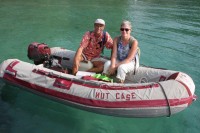
Who: Jim & Katie Coolbaugh
Port: Bethesda, MD USA
Where in the world is Asylum?
Good links
- Vesper Marine Watchmate AIS
- WinchRite Cordless Winch Handle
- Diving at Tubbataha Reef
- Royal Belau Yacht Club, Palau
- ShipTrack: Our route so far
- Passage Weather
- Interview With a Cruiser Project
- Great diving in the Solomons
- Seven Seas Cruising Association
- Divers Alert Network
- Spectra Watermakers
- Rocna Anchors
.jpeg)
